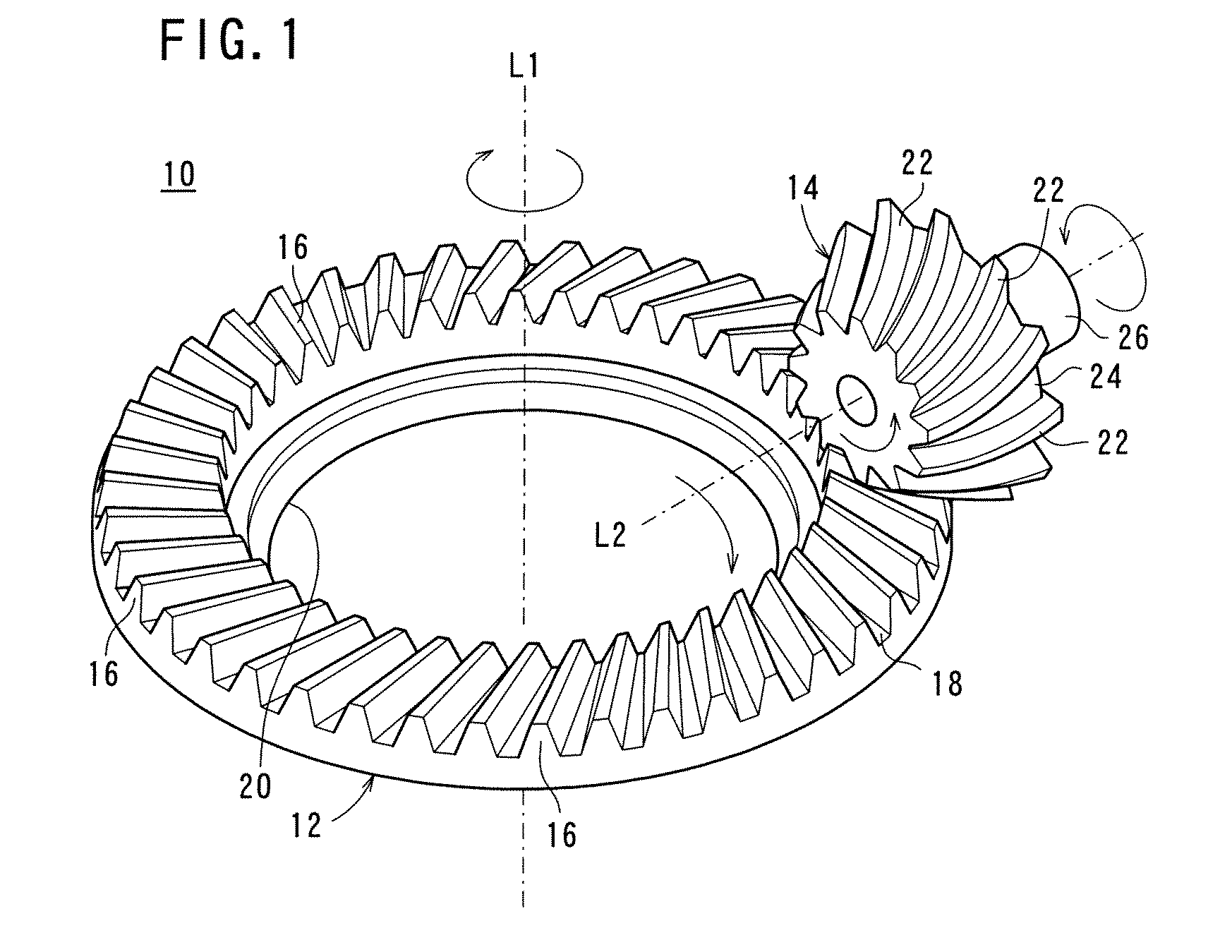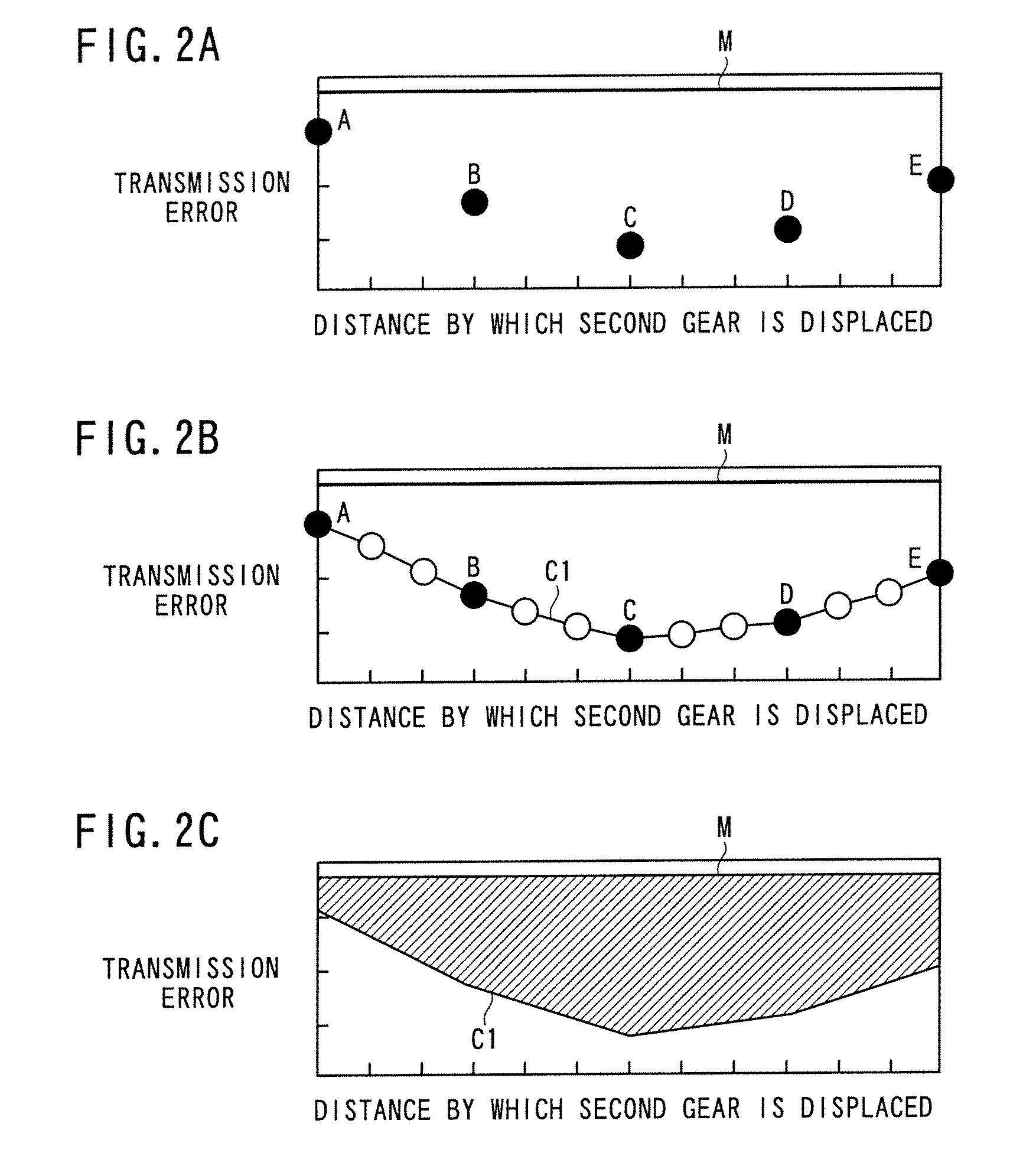Method for adjusting meshing position of hypoid gear
a meshing position and gear technology, applied in the direction of gearing, hoisting equipment, instruments, etc., can solve the problems of large transmission error and inability to identify accurate meshing positions, and achieve the effect of reducing gear noise, adjusting the meshing position with ease, and reducing gear nois
- Summary
- Abstract
- Description
- Claims
- Application Information
AI Technical Summary
Benefits of technology
Problems solved by technology
Method used
Image
Examples
Embodiment Construction
[0025]A method of adjusting the meshing position of a hypoid gear according to a preferred embodiment of the present invention will be described in detail below with reference to the accompanying drawings.
[0026]FIG. 1 is a schematic structural view of main parts of a hypoid gear 10. In this case, the hypoid gear 10 comprises a first gear 12 and a second gear 14 which is smaller in diameter than the first gear 12. In this case, the first gear 12 and the second gear 14 comprise spiral bevel gears.
[0027]The first gear 12 has an annular beveled portion 18 with teeth 16 disposed on a surface thereof. The beveled portion 18 has a through hole 20 defined therein, and a rotational shaft, not shown, is fitted in the through hole 20. The first gear 12 is rotatable about the rotational shaft (a hypothetical axis L1 in FIG. 1).
[0028]The second gear 14 has a beveled portion 24 with teeth 22 disposed thereon and a cylindrical shank 26 projecting from an end face of the beveled portion 24. The tee...
PUM
 Login to View More
Login to View More Abstract
Description
Claims
Application Information
 Login to View More
Login to View More - R&D
- Intellectual Property
- Life Sciences
- Materials
- Tech Scout
- Unparalleled Data Quality
- Higher Quality Content
- 60% Fewer Hallucinations
Browse by: Latest US Patents, China's latest patents, Technical Efficacy Thesaurus, Application Domain, Technology Topic, Popular Technical Reports.
© 2025 PatSnap. All rights reserved.Legal|Privacy policy|Modern Slavery Act Transparency Statement|Sitemap|About US| Contact US: help@patsnap.com



